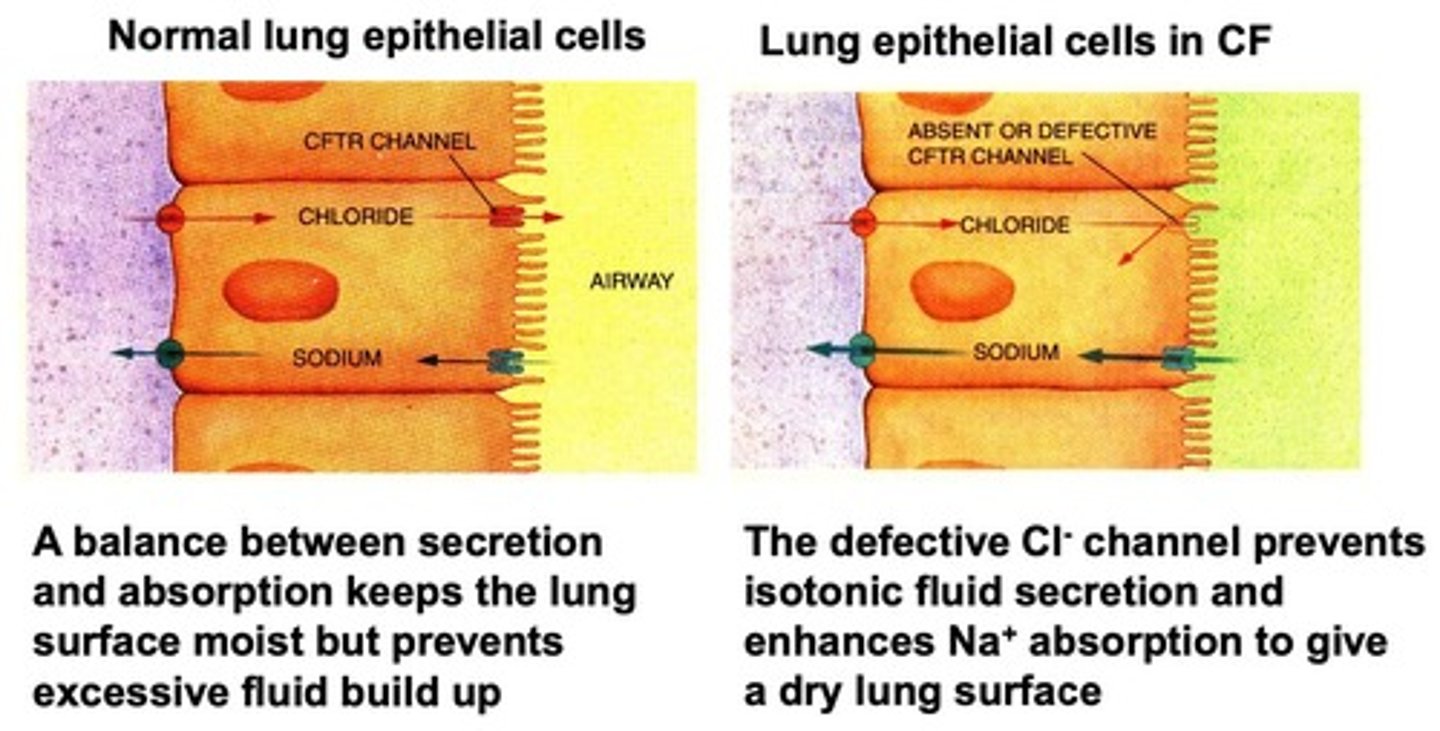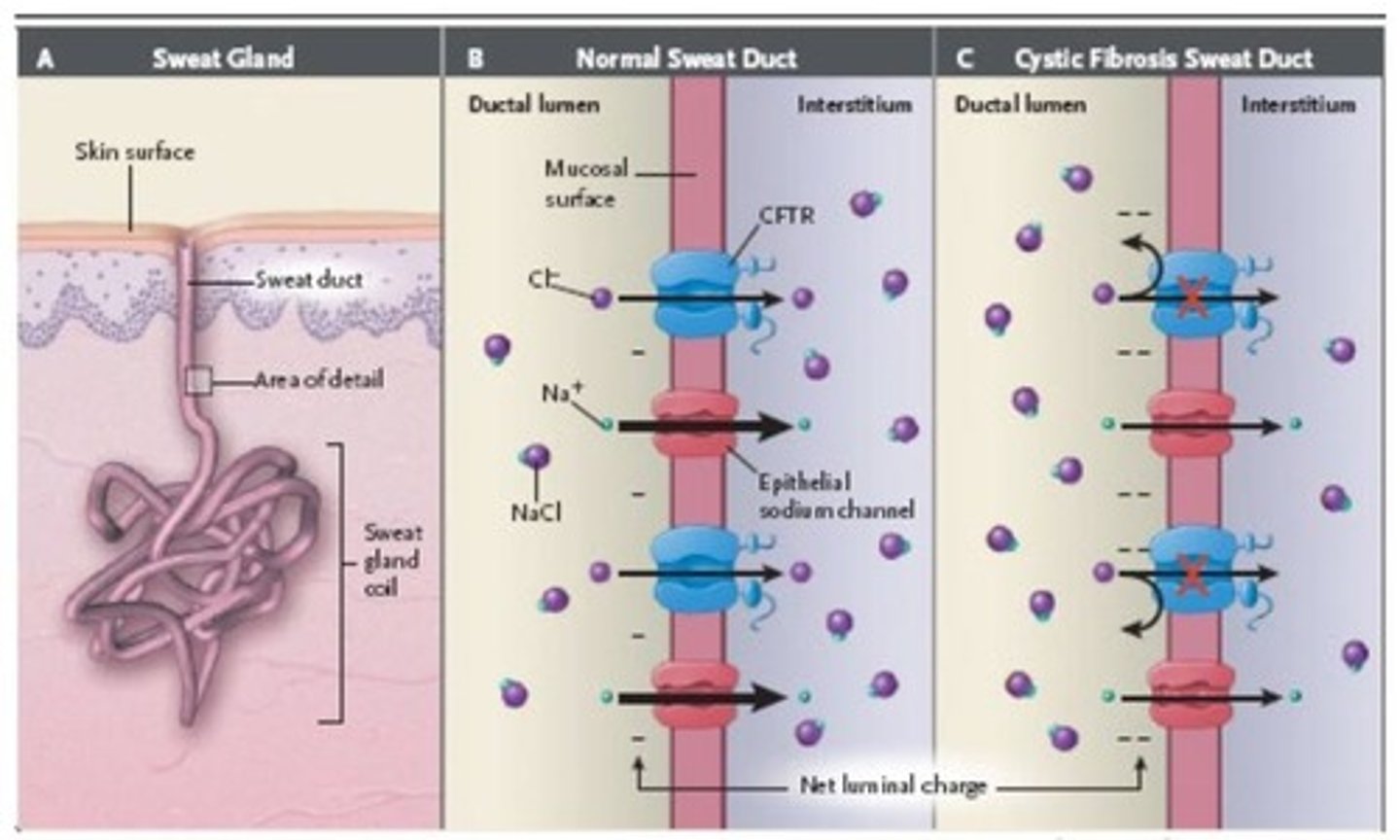Chloride Secretion and Cystic Fibrosis Mechanisms
1/23
There's no tags or description
Looks like no tags are added yet.
Name | Mastery | Learn | Test | Matching | Spaced |
|---|
No study sessions yet.
24 Terms
Chloride secretion
Process of Cl- moving across epithelial cells.
Tight junctions
Structures dividing epithelial cells into domains.
Na pump
Establishes ion gradients for cell function.
NaK2Cl symporter
Uses Na gradient to accumulate Cl- actively.
Passive diffusion
Movement of Cl- through ion channels.
Basolateral Na-pump
Exchanges Na+ for K+ in epithelial cells.
Paracellular fluxes
Movement of Na and water alongside Cl-.
Rate-limiting step
Cl- channel opening controls Cl- secretion rate.
CFTR
Cystic Fibrosis Transmembrane Conductance Regulator, a Cl- channel.
Secretory diarrhea
Excessive fluid secretion in intestines, causing diarrhea.
Endogenous secretagogues
Substances stimulating secretion from cells.
Enterotoxins
Bacterial toxins activating CFTR, causing diarrhea.
Adenylate cyclase
Enzyme activated by enterotoxins, increasing CFTR activity.

Cystic fibrosis
Genetic disorder affecting chloride transport in cells.

Autosomal recessive
Inheritance pattern requiring two copies of mutated gene.
Carrier
Individual with one mutated gene, no symptoms.
Disease frequency
Incidence of CF varies by ethnic group.
Median survival
Average lifespan of CF patients is 38 years.
Chest percussion
Technique to clear lung secretions in CF patients.
Pancreatic enzyme replacement
Treatment for digestive issues in CF patients.
Salty sweat
Characteristic of CF due to NaCl reabsorption failure.

Isotonic secretion
Initial fluid secretion by acinar cells in sweat glands.
Hypotonic solution
Fluid with lower solute concentration after NaCl reabsorption.
Membrane potential
Electrical charge difference across cell membranes.